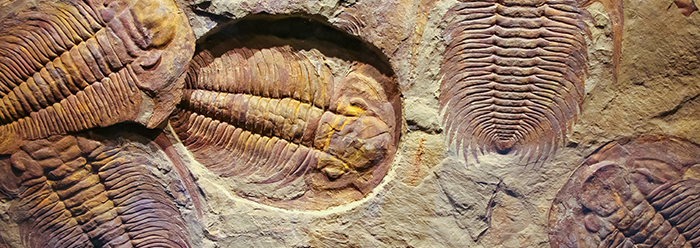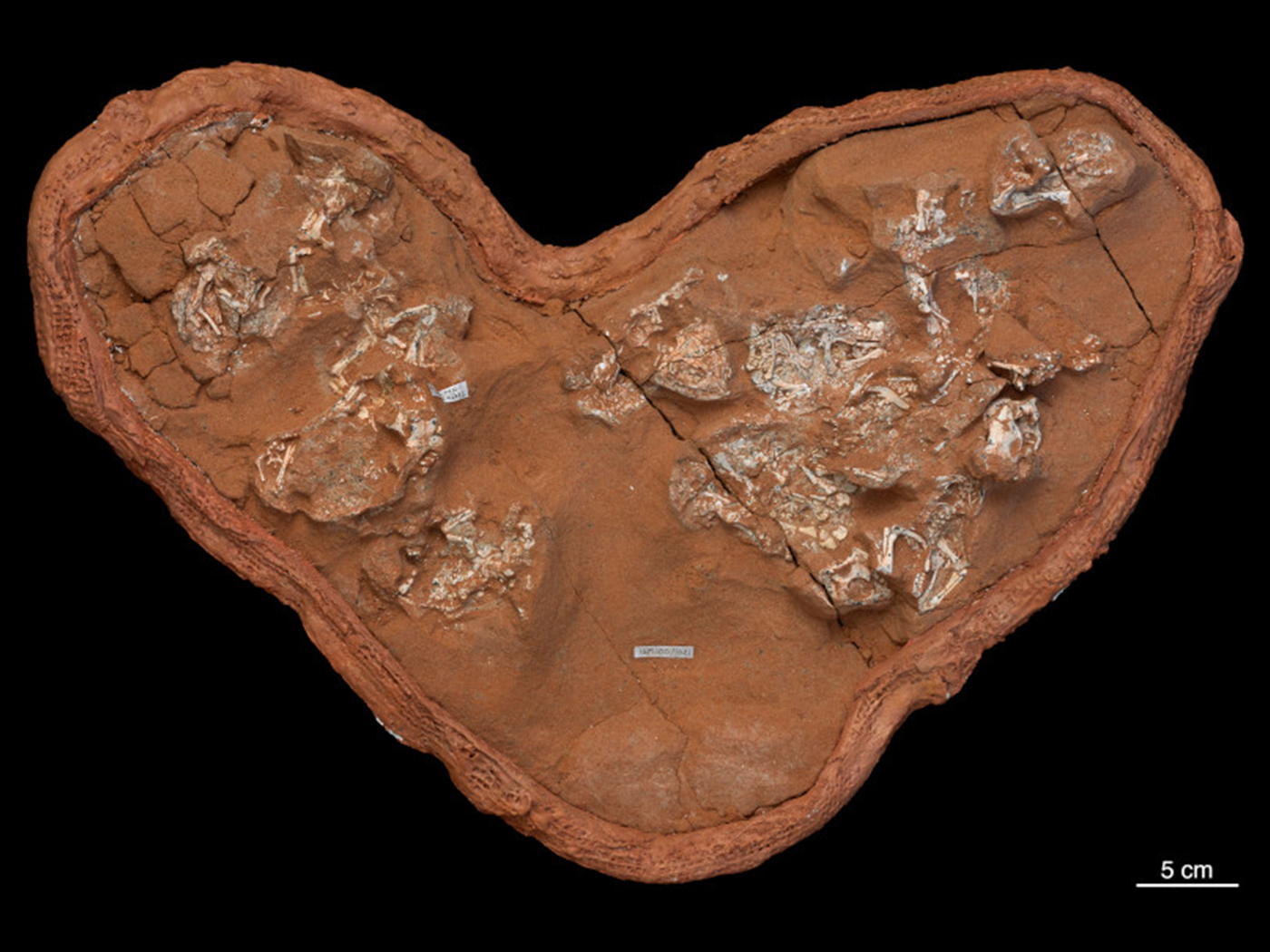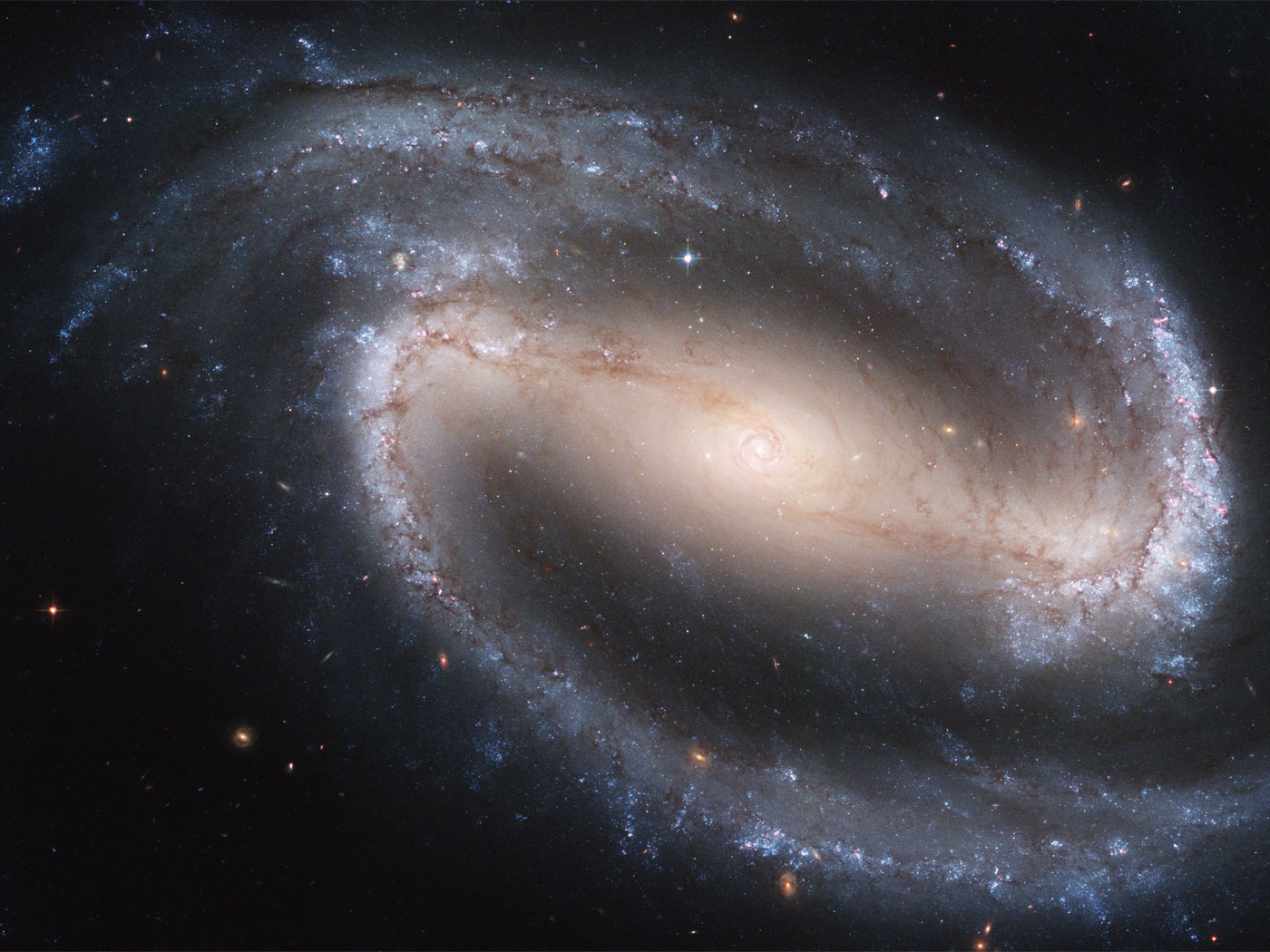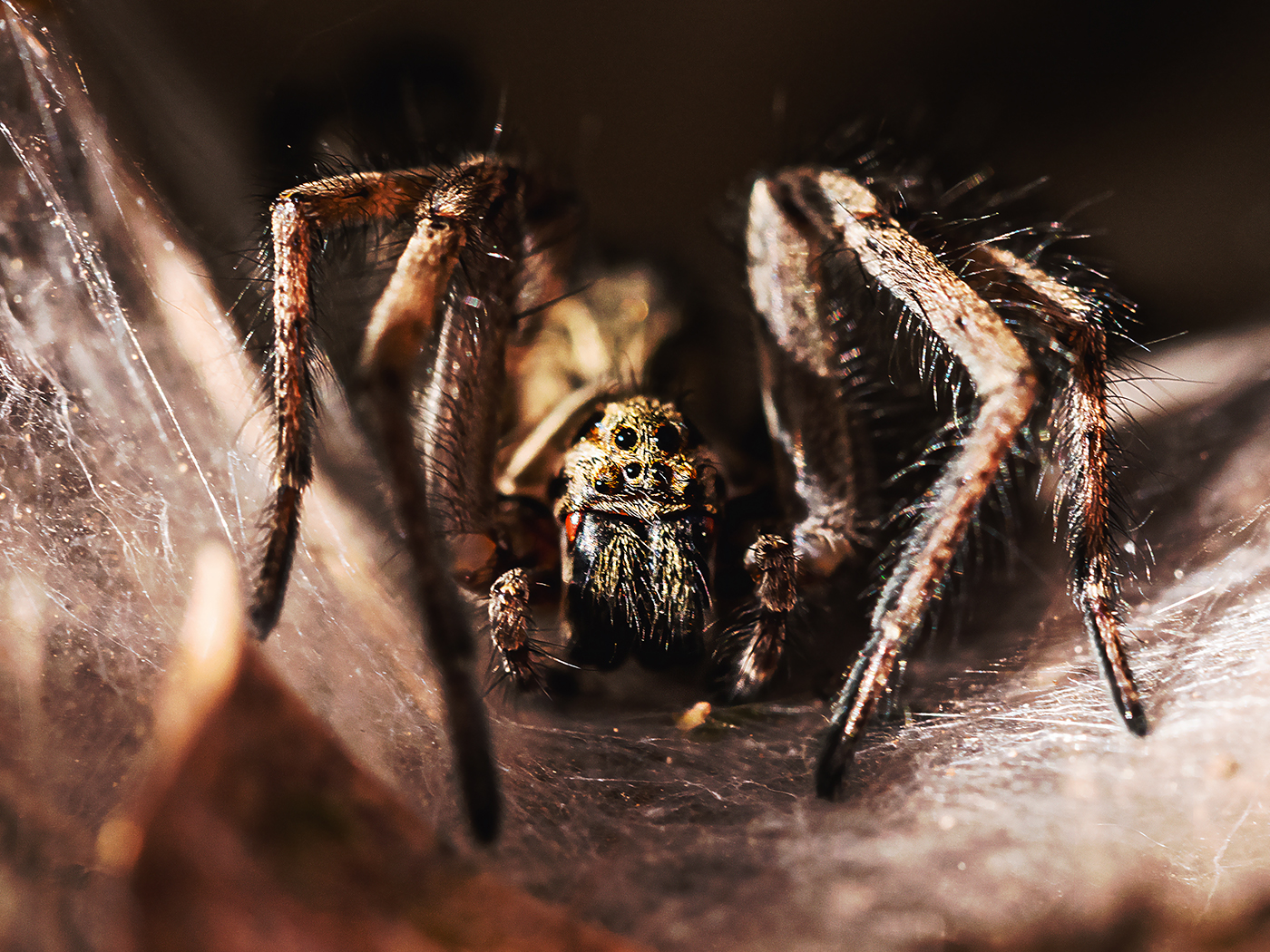Trilobites were fascinating invertebrates that inhabited pre-Flood ocean bottoms. They were fossilized when “primitive” life supposedly was just getting started, but the complexity of these animals is unparalleled. New trilobite anatomical discoveries contradict previous evolutionary beliefs about their digestive systems.1
New trilobite anatomical discoveries contradict previous evolutionary beliefs. ![]()
According to evolution theory, trilobites appeared fully formed about 540 million years ago in a period called the Early Cambrian. There are about 56 families of these extinct creatures. Not only did they come in a wide variety of sizes, they also had three kinds of extremely complex eyes. God designed the material of the upper lenses to be made of calcite—an excellent material for a creature’s visual system in a watery environment. But optical physics states that the refractive index of this material differs significantly, causing a detrimental condition called birefringence.
The birefringence can be avoided, however, if the crystal is oriented so that the light is moving parallel to its principal optic axis. And this is precisely the orientation observed in trilobite lenses.3
As predicted by creationists, trilobites have no evolutionary ancestors—no such transitional fossils have ever been found.2
As predicted by creationists, trilobites have no evolutionary ancestors. ![]()
Recently, paleontological research unearthed more trilobite complexity: a unique digestive anatomy found in some 270 specimens in the Wulongqing Formation (Guanshan Biota) in China. Some of these fossils “contradict previous assumptions about trilobite digestive systems.” 1
Prior to this discovery, the conventional understanding of trilobite digestive anatomy was fairly straightforward. There were two different types: one was a tube running down the inside of the body with digestive glands branching off, and the second, an expanded stomach termed a crop going into a tube with no lateral glands. Evolutionists felt the first type evolved first in the supposed “earliest trilobites” with the second type evolving some time later.
Based on this, paleontologists had proposed that the evolution of the crop came later in trilobite evolutionary history and represented a distinct type of digestive system.1
But since evolution is not true, creationists see these as basic variation in digestive system morphology. Indeed, this recent discovery in China showed a single specimen having both digestive glands and a crop “suggesting that the evolution of trilobite digestive systems is more complex than originally proposed.”1
The evidence is clear: Trilobites have always been trilobites. ![]()
Dr. Melanie Hopkins of the American Museum of Natural History stated,
This is a very rigorous study based on multiple specimens, and it shows that we should start thinking about this aspect of trilobite biology and evolution in a different way.1
Non-Darwinists heartily agree and suggest ignoring the strange and unscientific fish-to-philosopher idea and rather think of trilobite biology in terms of plan, purpose, and special creation. The evidence is clear: Trilobites have always been trilobites.
References
- News Staff. Study: Earliest Trilobites Had Stomachs. Science News. Posted on scinews.com September 22, 2017, accessed September 26, 2017.
- Clarkson, E. N. K. 1998. Invertebrate Paleontology and Evolution, 4th ed. Oxford, UK: Wiley/Blackwell Science, 452.
- Raup, D. and S. Stanley. 1978. Principles of Paleontology, 2nd ed. New York: W. H. Freeman & Co., 182.
*Frank Sherwin is Research Associate, Senior Lecturer, and Science Writer at the Institute for Creation Research.
Article posted on October 5, 2017.
























